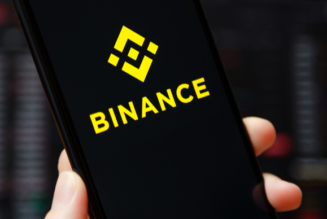Economy
President Ruto pushes for Hustler-friendly Treasury bills, bonds trading
Tuesday September 12 2023

President William Ruto and Central Bank of Kenya Governor Kamau Thugge during the launch of Central Securities Depository digital platform, at CBK, Nairobi. PHOTO | PCS
President William Ruto has directed the Central Bank of Kenya (CBK) to lower the entry-level in Treasury bills and bonds trading to accommodate a wider pool of retail investors.
The President said on Monday there was need to democratise investments in government securities, citing similar efforts made in the past with the mobile-based M-Akiba bond.
“There is a case I would like to make for people who do not necessarily want to work with Sh50,000. This is what was desired before with M-Akiba but didn’t go as far because of the many challenges. It is completely undemocratic that one person has the opportunity to make a return of 10 percent from Treasury bonds and then another, investing and getting a return of only two percent,” President Ruto stated.
Read: M-Akiba bond to be revived using Hustler Fund savings
“I am persuaded that it is possible for us to reduce the denomination and I want the team (at CBK) to work to establish what denomination can democratise the space including the available instruments to investors.”
Currently, individuals looking to purchase Treasury bonds with tenures of between one and 30 years must invest a minimum of Sh50,000. Those wishing to purchase infrastructure bonds have to invest a minimum of Sh100,000.
Treasury bills, which represent shorter-term investments in government paper with maturities of 91, 182 and 364 days, meanwhile require a minimum investment of Sh100,000.
Previously, the government made an attempt to lure in the majority of the public into investing in government securities through M-Akiba- a retail infrastructure bond issued by the government to enhance financial inclusion.
The retail bond which was exclusively offered via mobile phones required a minimum investment of Sh3,000 and delivered a return on investment of 10 percent per year with the interest income earned being exempted from taxes.
M-Akiba nevertheless underperformed, dragged down by challenges such as poor timing, low understanding of the product and weak customer care practices.
The dismal outcome of the retail bond led the Treasury to move the issuance of the instrument from the Nairobi Securities Exchange (NSE) to the Central Bank of Kenya (CBK), with the apex bank now planning the revamp of the product.
An estimated 300,000 people had registered on the M-Akiba platform at its initial launch.
Analysts have expressed scepticism as to whether lowering the entry level for retail investors will have the desired effect.
Churchill Ogutu, an economist at IC Asset Managers, termed the plan audacious, but problematic.
“I think the biggest problem that may arise for a small-ticket investor who wants to sell their paper will be in execution where price discrimination may widen further from the present, with big-ticket investors continuing to get better pricing compared to small-ticket size investors,” he said.
“Rather than rocking the boat, money market funds and fixed income funds offer a better way for small-ticket investors to have exposure to the fixed income segment.”
In addition to the guidance on the entry-level threshold for retail investors, Dr Ruto wants the CBK to scrap the requirement for investors in government securities to have an active bank account in the country.
‘My advice and feedback is that you need to make it possible for Kenyans who do not have a bank account but have an M-Pesa (mobile money) account to participate in trading government securities,” he said.
Investors buying Treasury bills or bonds in effect loan money to the government for a specified period of time, which is referred to as the bond maturity.
Read: CMA roots for return of mobile bond investments
For most bonds, investors usually receive interest payments every six months throughout the specified period at the end of which the investor recovers the principal amount which is usually the face value amount invested.
Treasury bills nevertheless differ in that the instrument is sold to investors at a discount where the investor pays less than the bill’s face value but receives the full face value of the bill at redemption, with the difference representing interest income for the participant.









